Keqiang Li
Hierarchical Feature-level Reverse Propagation for Post-Training Neural Networks
Jun 08, 2025Abstract:End-to-end autonomous driving has emerged as a dominant paradigm, yet its highly entangled black-box models pose significant challenges in terms of interpretability and safety assurance. To improve model transparency and training flexibility, this paper proposes a hierarchical and decoupled post-training framework tailored for pretrained neural networks. By reconstructing intermediate feature maps from ground-truth labels, surrogate supervisory signals are introduced at transitional layers to enable independent training of specific components, thereby avoiding the complexity and coupling of conventional end-to-end backpropagation and providing interpretable insights into networks' internal mechanisms. To the best of our knowledge, this is the first method to formalize feature-level reverse computation as well-posed optimization problems, which we rigorously reformulate as systems of linear equations or least squares problems. This establishes a novel and efficient training paradigm that extends gradient backpropagation to feature backpropagation. Extensive experiments on multiple standard image classification benchmarks demonstrate that the proposed method achieves superior generalization performance and computational efficiency compared to traditional training approaches, validating its effectiveness and potential.
Towards Human-Like Trajectory Prediction for Autonomous Driving: A Behavior-Centric Approach
May 27, 2025



Abstract:Predicting the trajectories of vehicles is crucial for the development of autonomous driving (AD) systems, particularly in complex and dynamic traffic environments. In this study, we introduce HiT (Human-like Trajectory Prediction), a novel model designed to enhance trajectory prediction by incorporating behavior-aware modules and dynamic centrality measures. Unlike traditional methods that primarily rely on static graph structures, HiT leverages a dynamic framework that accounts for both direct and indirect interactions among traffic participants. This allows the model to capture the subtle yet significant influences of surrounding vehicles, enabling more accurate and human-like predictions. To evaluate HiT's performance, we conducted extensive experiments using diverse and challenging real-world datasets, including NGSIM, HighD, RounD, ApolloScape, and MoCAD++. The results demonstrate that HiT consistently outperforms other top models across multiple metrics, particularly excelling in scenarios involving aggressive driving behaviors. This research presents a significant step forward in trajectory prediction, offering a more reliable and interpretable approach for enhancing the safety and efficiency of fully autonomous driving systems.
Conformal Symplectic Optimization for Stable Reinforcement Learning
Dec 03, 2024



Abstract:Training deep reinforcement learning (RL) agents necessitates overcoming the highly unstable nonconvex stochastic optimization inherent in the trial-and-error mechanism. To tackle this challenge, we propose a physics-inspired optimization algorithm called relativistic adaptive gradient descent (RAD), which enhances long-term training stability. By conceptualizing neural network (NN) training as the evolution of a conformal Hamiltonian system, we present a universal framework for transferring long-term stability from conformal symplectic integrators to iterative NN updating rules, where the choice of kinetic energy governs the dynamical properties of resulting optimization algorithms. By utilizing relativistic kinetic energy, RAD incorporates principles from special relativity and limits parameter updates below a finite speed, effectively mitigating abnormal gradient influences. Additionally, RAD models NN optimization as the evolution of a multi-particle system where each trainable parameter acts as an independent particle with an individual adaptive learning rate. We prove RAD's sublinear convergence under general nonconvex settings, where smaller gradient variance and larger batch sizes contribute to tighter convergence. Notably, RAD degrades to the well-known adaptive moment estimation (ADAM) algorithm when its speed coefficient is chosen as one and symplectic factor as a small positive value. Experimental results show RAD outperforming nine baseline optimizers with five RL algorithms across twelve environments, including standard benchmarks and challenging scenarios. Notably, RAD achieves up to a 155.1% performance improvement over ADAM in Atari games, showcasing its efficacy in stabilizing and accelerating RL training.
Hierarchical End-to-End Autonomous Driving: Integrating BEV Perception with Deep Reinforcement Learning
Sep 26, 2024Abstract:End-to-end autonomous driving offers a streamlined alternative to the traditional modular pipeline, integrating perception, prediction, and planning within a single framework. While Deep Reinforcement Learning (DRL) has recently gained traction in this domain, existing approaches often overlook the critical connection between feature extraction of DRL and perception. In this paper, we bridge this gap by mapping the DRL feature extraction network directly to the perception phase, enabling clearer interpretation through semantic segmentation. By leveraging Bird's-Eye-View (BEV) representations, we propose a novel DRL-based end-to-end driving framework that utilizes multi-sensor inputs to construct a unified three-dimensional understanding of the environment. This BEV-based system extracts and translates critical environmental features into high-level abstract states for DRL, facilitating more informed control. Extensive experimental evaluations demonstrate that our approach not only enhances interpretability but also significantly outperforms state-of-the-art methods in autonomous driving control tasks, reducing the collision rate by 20%.
Unveiling the Black Box: Independent Functional Module Evaluation for Bird's-Eye-View Perception Model
Sep 18, 2024Abstract:End-to-end models are emerging as the mainstream in autonomous driving perception. However, the inability to meticulously deconstruct their internal mechanisms results in diminished development efficacy and impedes the establishment of trust. Pioneering in the issue, we present the Independent Functional Module Evaluation for Bird's-Eye-View Perception Model (BEV-IFME), a novel framework that juxtaposes the module's feature maps against Ground Truth within a unified semantic Representation Space to quantify their similarity, thereby assessing the training maturity of individual functional modules. The core of the framework lies in the process of feature map encoding and representation aligning, facilitated by our proposed two-stage Alignment AutoEncoder, which ensures the preservation of salient information and the consistency of feature structure. The metric for evaluating the training maturity of functional modules, Similarity Score, demonstrates a robust positive correlation with BEV metrics, with an average correlation coefficient of 0.9387, attesting to the framework's reliability for assessment purposes.
GS-Net: Generalizable Plug-and-Play 3D Gaussian Splatting Module
Sep 17, 2024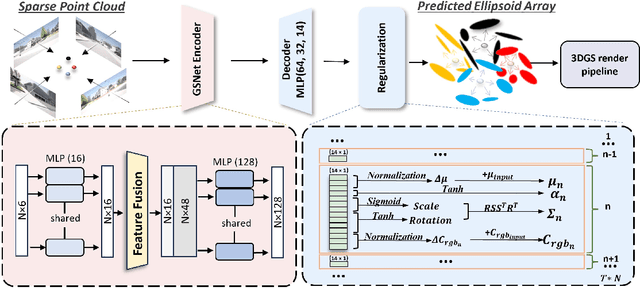

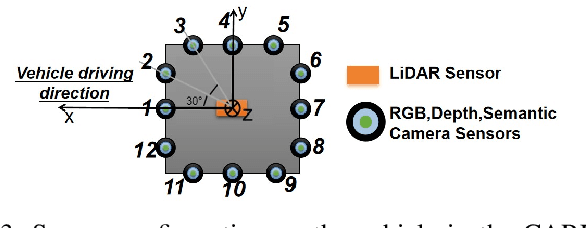
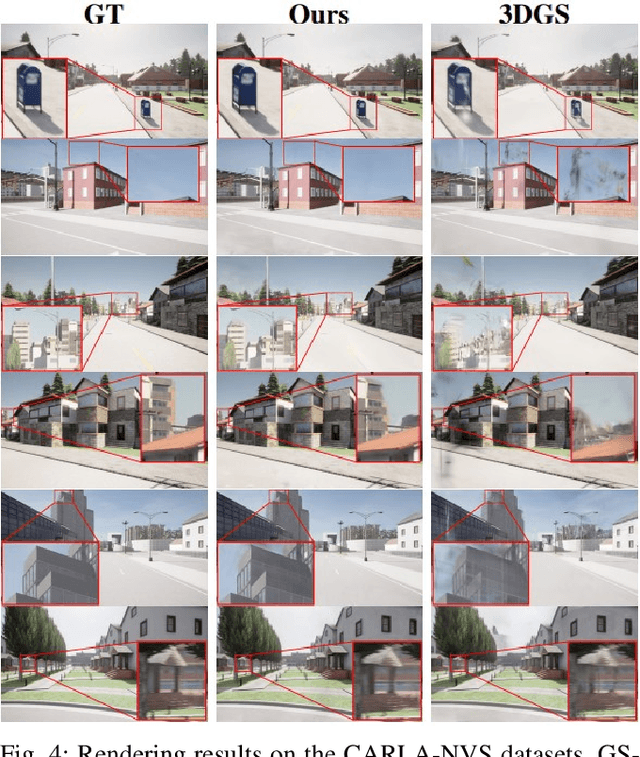
Abstract:3D Gaussian Splatting (3DGS) integrates the strengths of primitive-based representations and volumetric rendering techniques, enabling real-time, high-quality rendering. However, 3DGS models typically overfit to single-scene training and are highly sensitive to the initialization of Gaussian ellipsoids, heuristically derived from Structure from Motion (SfM) point clouds, which limits both generalization and practicality. To address these limitations, we propose GS-Net, a generalizable, plug-and-play 3DGS module that densifies Gaussian ellipsoids from sparse SfM point clouds, enhancing geometric structure representation. To the best of our knowledge, GS-Net is the first plug-and-play 3DGS module with cross-scene generalization capabilities. Additionally, we introduce the CARLA-NVS dataset, which incorporates additional camera viewpoints to thoroughly evaluate reconstruction and rendering quality. Extensive experiments demonstrate that applying GS-Net to 3DGS yields a PSNR improvement of 2.08 dB for conventional viewpoints and 1.86 dB for novel viewpoints, confirming the method's effectiveness and robustness.
Vision-Driven 2D Supervised Fine-Tuning Framework for Bird's Eye View Perception
Sep 09, 2024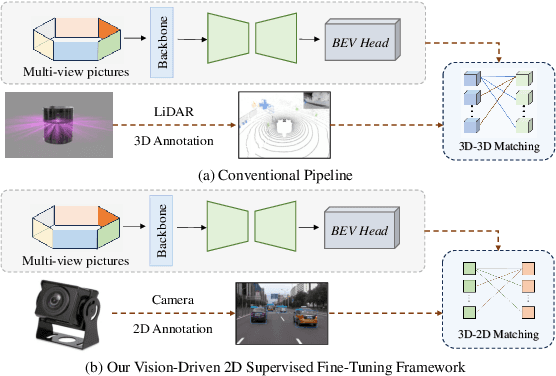
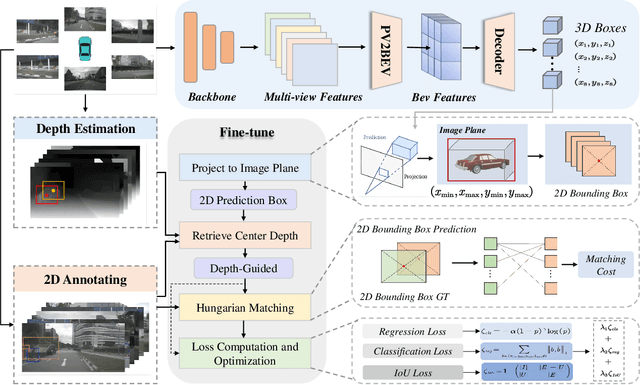
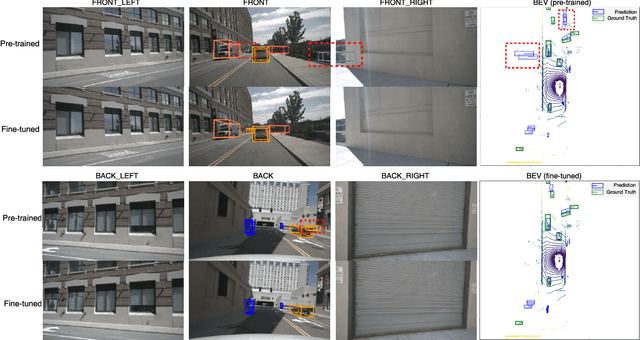

Abstract:Visual bird's eye view (BEV) perception, due to its excellent perceptual capabilities, is progressively replacing costly LiDAR-based perception systems, especially in the realm of urban intelligent driving. However, this type of perception still relies on LiDAR data to construct ground truth databases, a process that is both cumbersome and time-consuming. Moreover, most massproduced autonomous driving systems are only equipped with surround camera sensors and lack LiDAR data for precise annotation. To tackle this challenge, we propose a fine-tuning method for BEV perception network based on visual 2D semantic perception, aimed at enhancing the model's generalization capabilities in new scene data. Considering the maturity and development of 2D perception technologies, our method significantly reduces the dependency on high-cost BEV ground truths and shows promising industrial application prospects. Extensive experiments and comparative analyses conducted on the nuScenes and Waymo public datasets demonstrate the effectiveness of our proposed method.
OE-BevSeg: An Object Informed and Environment Aware Multimodal Framework for Bird's-eye-view Vehicle Semantic Segmentation
Jul 18, 2024Abstract:Bird's-eye-view (BEV) semantic segmentation is becoming crucial in autonomous driving systems. It realizes ego-vehicle surrounding environment perception by projecting 2D multi-view images into 3D world space. Recently, BEV segmentation has made notable progress, attributed to better view transformation modules, larger image encoders, or more temporal information. However, there are still two issues: 1) a lack of effective understanding and enhancement of BEV space features, particularly in accurately capturing long-distance environmental features and 2) recognizing fine details of target objects. To address these issues, we propose OE-BevSeg, an end-to-end multimodal framework that enhances BEV segmentation performance through global environment-aware perception and local target object enhancement. OE-BevSeg employs an environment-aware BEV compressor. Based on prior knowledge about the main composition of the BEV surrounding environment varying with the increase of distance intervals, long-sequence global modeling is utilized to improve the model's understanding and perception of the environment. From the perspective of enriching target object information in segmentation results, we introduce the center-informed object enhancement module, using centerness information to supervise and guide the segmentation head, thereby enhancing segmentation performance from a local enhancement perspective. Additionally, we designed a multimodal fusion branch that integrates multi-view RGB image features with radar/LiDAR features, achieving significant performance improvements. Extensive experiments show that, whether in camera-only or multimodal fusion BEV segmentation tasks, our approach achieves state-of-the-art results by a large margin on the nuScenes dataset for vehicle segmentation, demonstrating superior applicability in the field of autonomous driving.
Hierarchical and Decoupled BEV Perception Learning Framework for Autonomous Driving
Jul 17, 2024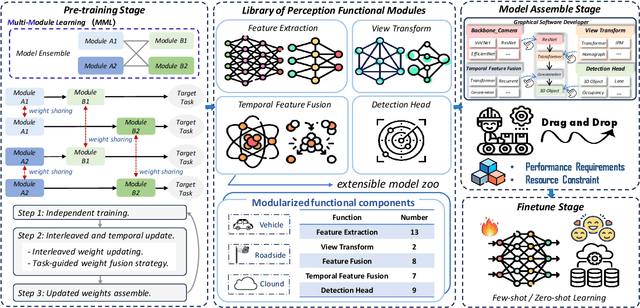
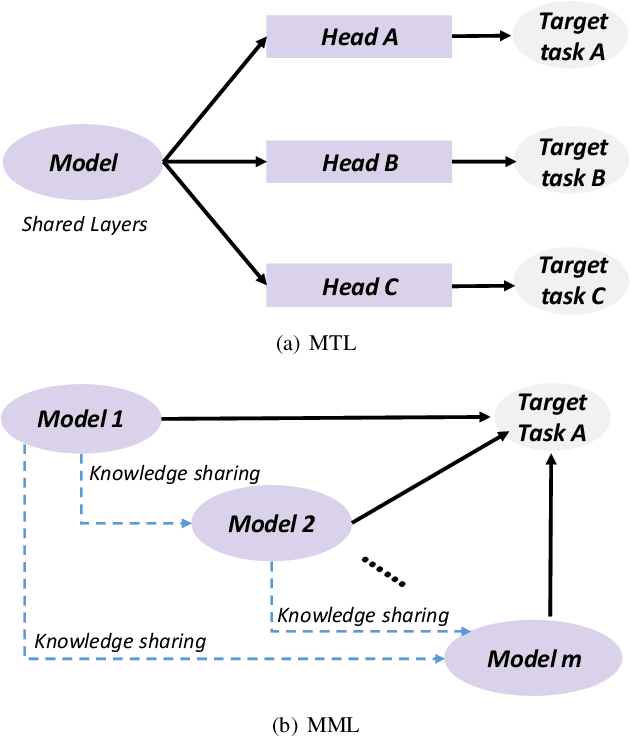
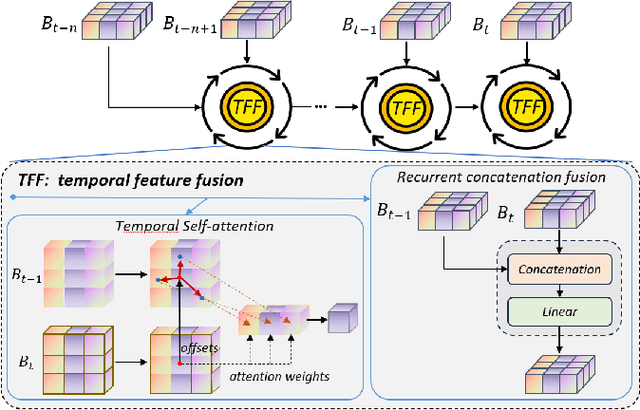
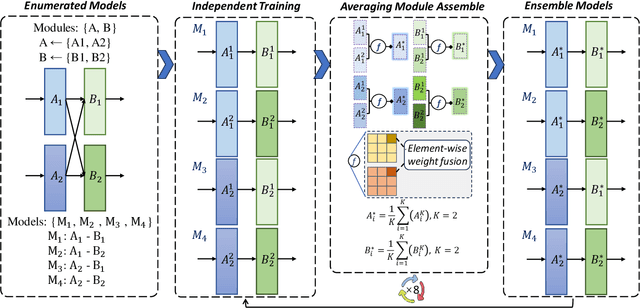
Abstract:Perception is essential for autonomous driving system. Recent approaches based on Bird's-eye-view (BEV) and deep learning have made significant progress. However, there exists challenging issues including lengthy development cycles, poor reusability, and complex sensor setups in perception algorithm development process. To tackle the above challenges, this paper proposes a novel hierarchical Bird's-eye-view (BEV) perception paradigm, aiming to provide a library of fundamental perception modules and user-friendly graphical interface, enabling swift construction of customized models. We conduct the Pretrain-Finetune strategy to effectively utilize large scale public datasets and streamline development processes. Specifically, we present a Multi-Module Learning (MML) approach, enhancing performance through synergistic and iterative training of multiple models. Extensive experimental results on the Nuscenes dataset demonstrate that our approach renders significant improvement over the traditional training method.
Feature Map Convergence Evaluation for Functional Module
May 07, 2024

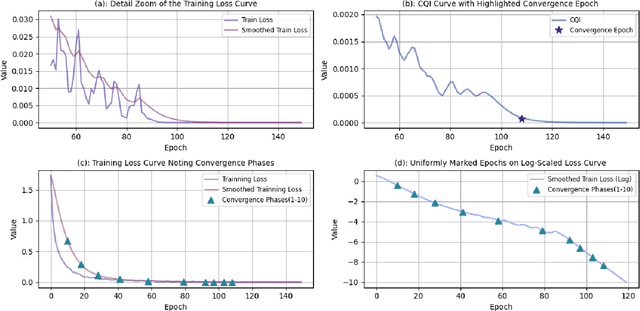
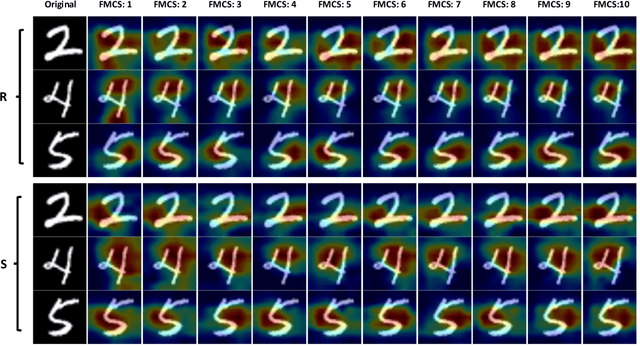
Abstract:Autonomous driving perception models are typically composed of multiple functional modules that interact through complex relationships to accomplish environment understanding. However, perception models are predominantly optimized as a black box through end-to-end training, lacking independent evaluation of functional modules, which poses difficulties for interpretability and optimization. Pioneering in the issue, we propose an evaluation method based on feature map analysis to gauge the convergence of model, thereby assessing functional modules' training maturity. We construct a quantitative metric named as the Feature Map Convergence Score (FMCS) and develop Feature Map Convergence Evaluation Network (FMCE-Net) to measure and predict the convergence degree of models respectively. FMCE-Net achieves remarkable predictive accuracy for FMCS across multiple image classification experiments, validating the efficacy and robustness of the introduced approach. To the best of our knowledge, this is the first independent evaluation method for functional modules, offering a new paradigm for the training assessment towards perception models.
 Add to Chrome
Add to Chrome Add to Firefox
Add to Firefox Add to Edge
Add to Edge